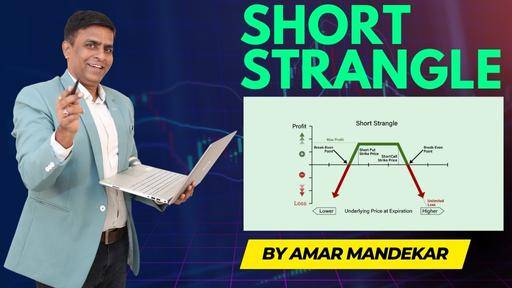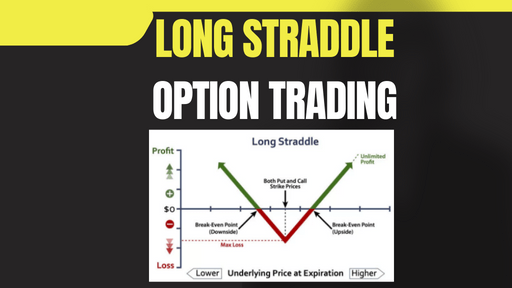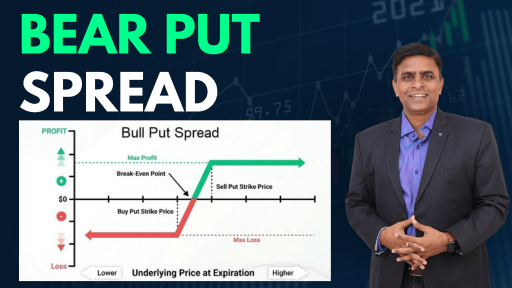Table of Contents
Introduction of Options Trading Strategies :
Ah, options trading – the thrilling world of financial opportunities where savvy investors seize the moment to capitalize on price movements without the need to own the underlying assets. Options offer a plethora of possibilities, but without a sound strategy, navigating these waters can be akin to navigating the Bermuda Triangle.
Don’t fret, though! We’ve got your back. In this guide, we’ll reveal the crème de la crème of options trading strategies – ten powerful techniques that can safeguard your investments and catapult your profits to new heights. So, buckle up, my fellow traders, as we embark on a journey to explore the art of options trading and unleash the potential of these strategies.
Covered Call: The Solid Foundation of Options Trading Strategies
- Beginner’s Essential: Covered Call is the bread and butter of options trading – perfect for newcomers to the world of options.
- Generate Income: By selling call options against your owned stock, you can create an additional stream of income.
- Protection Against Price Drops: The strategy acts like an insurance policy, safeguarding your stocks from potential price declines.
- Sleep Peacefully: With Covered Call, you can sleep soundly at night, knowing you have a solid foundation for managing risks and maximizing returns.

Bull Call Spread: Charging Ahead of Options Trading Strategies
How it Works:
- Buy a Call option with a specific strike price.
- Simultaneously sell a Call option with a higher strike price.
- The premium received from selling the second Call partially offsets the cost of the first one.
Benefits:
- Capped Profits: Enjoy gains up to the spread between the two strike prices if the stock price soars.
- Limited Losses: The most you can lose is the net premium paid for the spread if the stock fizzles out.

Bear Put Spread: Taming the Bear of Options Trading Strategies
- Purpose: Profit from falling stock prices while limiting potential losses.
- How it works:
- Buy a Put Option: Acquire a Put option with a lower strike price to protect against stock price declines.
- Sell a Put Option: Simultaneously sell a Put option with a higher strike price to reduce the cost of the protective Put.
- Outcome Scenarios:
- Stock Price Plummets: The value of the protective Put increases, offsetting losses in the stock value.
- Stock Price Rallies: Maximum loss is limited to the net premium paid for the spread.
- Ideal Market Expectation: Anticipating a decline in the stock’s price.
- Risk vs. Reward: Limited potential loss, capped by the net premium, with potential for profit in a declining market.
- Key Advantages:
- Risk Management: Provides downside protection through the purchased Put option.
- Cost-effective: Selling a Put option helps reduce the overall cost of the strategy.
- Profit Potential: Profit in a bearish market scenario.
- Key Considerations:
- Limited Upside: Maximum profit potential is reached if the stock’s price drops to the lower strike price of the purchased Put.
- Breakeven Point: The stock price must fall below the breakeven point to realize a net gain.

Protective Collar: A Safeguarding Embrace of Options Trading Strategies
- Purpose: Shield your stock investments from drastic price fluctuations with a loving embrace, just like a safety net during market storms.
- Components: Combination of Covered Calls and Married Puts for comprehensive protection.
- Set Up:
- Own the underlying stock.
- Buy a Put option to guard against downward moves in stock price.
- Sell a Call option to receive a premium, which helps offset the cost of the Put.
- Benefits:
- Downside Protection: The Put option acts as insurance, limiting potential losses during market downturns.
- Cost Coverage: The premium received from selling the Call option helps fund the purchase of the Put.
- Bonus Earnings: Enjoy a small bonus through the premium received from the Call option sale.

Long Straddle: Straddling Volatility of Options Trading Strategies
- Objective: Profit from significant price fluctuations, regardless of the direction, by embracing market volatility.
- Execution: Simultaneously purchase a Call option and a Put option with the same strike price and expiration date for the chosen stock.
- How it Works:
- Buy Call Option: By purchasing a Call option, you gain the right to buy the underlying stock at the chosen strike price within the specified expiration period.
- Buy Put Option: Simultaneously, buy a Put option, which grants you the right to sell the underlying stock at the same strike price within the same expiration period.
- Profit Potential:
- Upward Price Movement: If the stock price rises significantly, the Call option’s value increases, allowing you to benefit from the price appreciation.
- Downward Price Movement: Conversely, if the stock price drops significantly, the Put option’s value rises, enabling you to profit from the price decline.
- Break-Even Points:
- Upper Breakeven: Occurs when the stock price rises above the sum of the strike price and the combined premium paid for both options.
- Lower Breakeven: Happens when the stock price falls below the strike price minus the total premium paid.
- Risk Management:
- Limited Loss: The maximum potential loss is limited to the total premium paid for both the Call and Put options.
- Market Conditions:
- High Volatility Expected: The Long Straddle is most effective in highly volatile market conditions when significant price swings are anticipated.
- Expiration Date: Both the Call and Put options should have the same expiration date to ensure the strategy’s effectiveness.
- Profit Scenario: Profit is achieved if the stock price moves significantly in either direction, surpassing the total premium paid for both options.
- Loss Scenario: The strategy may result in a loss if the stock price remains relatively stable, causing both options to lose value over time due to the decay of their extrinsic value.
- Risk Tolerance: Consider your risk tolerance and willingness to speculate on market volatility before employing this strategy.

Long Strangle: Strangling Volatility of Options Trading Strategies
Objective: Capitalize on volatility and profit from significant price movements, regardless of direction.
Components:
- Buy a Call option with a higher strike price.
- Buy a Put option with a lower strike price.
- Both options should have the same expiration date.
Potential Outcomes:
- If the stock price significantly rises: The Call option gains value, providing profit.
- If the stock price significantly drops: The Put option gains value, providing profit.
- If the stock price remains relatively stable: Both options may lose value, resulting in a limited loss (limited to the premium paid for the options).
Risk-Reward Profile:
- Limited risk: The maximum loss is limited to the combined premium paid for the Call and Put options.
- Unlimited profit potential: Profits can be substantial if the stock price experiences a significant move in either direction.
Advantages:
- Allows for flexible positioning to take advantage of market volatility.
- Provides the opportunity to profit from large price swings without predicting the stock’s direction.
- Lower upfront cost compared to Long Straddle due to using out-of-the-money options.
Considerations:
- Time decay: Both options have an expiration date, so time is a crucial factor.
- Significant price movement required: Profits are dependent on substantial stock price changes.
- Market timing: Proper timing is essential for maximizing the strategy’s potential.

Short Strangle of Options Trading Strategies
- Definition: Options trading strategy involving the sale of both a put option and a call option on the same underlying asset, with the same expiration date but different strike prices.
- Objective: To profit from a relatively neutral market outlook with low expected volatility.
- Execution:
- Sell an out-of-the-money (OTM) call option (strike price above the current market price).
- Simultaneously, sell an OTM put option (strike price below the current market price).
- Profit: If the underlying asset’s price stays within a certain range until expiration, both options expire worthless, resulting in the trader keeping the premiums collected as profit.
- Risk: Involves unlimited risk on both sides. Significant price movements in either direction can lead to substantial losses.
- Market Outlook: Typically employed with a neutral-to-slightly-bearish or neutral-to-slightly-bullish view on the underlying asset, expecting low volatility during the options’ life.
- Caution: Options trading is complex and may not be suitable for all investors. Consult with a financial advisor before making any investment decisions.

Long Call Butterfly Spread: The Butterfly Effect of Options Trading Strategies
Iron Condor: Master of the Skies of Options Trading Strategies
- Objective: Take advantage of low volatility with a limited-risk, limited-reward setup.
- Components:
- Sell 1 Put option with a lower strike price (Bull Put Spread).
- Buy 1 Put option with an even lower strike price (Bull Put Spread).
- Sell 1 Call option with a higher strike price (Bear Call Spread).
- Buy 1 Call option with an even higher strike price (Bear Call Spread).
- All options should have the same expiration date.
- Profit Zone: The stock price should stay within a certain range, defined by the spread between the two Put options and the two Call options.
- Payoff: Enjoy a nice payoff if the stock price remains within the specified range until expiration.
Advantages:
- Beneficial in low volatility scenarios.
- Limited risk due to defined spread.
- Potential for a profit in a neutral market.
Considerations:
- Commissions and fees can impact overall returns.
- Limited potential profit compared to more aggressive strategies.
- Careful monitoring is necessary to manage potential losses.
Risk Management:
- Set specific entry and exit points.
- Implement stop-loss orders to limit potential losses.
- Diversify your portfolio to spread risk.

Iron Butterfly: Grace in Balance of Options Trading Strategies
- Market Outlook: Expecting minimal price movement in the underlying stock.
- Objective: Benefit from low volatility.
- Steps to Execute:
- Sell a Call option with a higher strike price (Bear Call Spread).
- Buy a Put option with a lower strike price.
- Sell another Put option with a higher strike price (Bull Put Spread).
- Buy another Call option with a lower strike price.
- All options should have the same expiration date.
- Maximum Profit: Occurs when the stock price remains steady and aligns with the middle strike prices.

FAQs:
Q: Are these options strategies suitable for beginners?
A: Absolutely! While some strategies might require a bit more experience, many of them are accessible to beginners with a little practice.
Q: How do I choose the right strategy for a particular trade?
A: It depends on your market outlook, risk tolerance, and the specific stock or asset you’re dealing with. Each strategy serves a different purpose, so understanding your goals and market conditions is key.
Q: Are there any risks involved in options trading?
A: Yes, like any investment, options trading carries risks. However, using these strategies can help mitigate potential losses and enhance your overall success.
Conclusion:
There you have it – a treasure trove of ten options trading strategies that can elevate your trading prowess and steer you toward financial triumph. From the foundational Covered Call to the graceful Iron Butterfly, each strategy possesses unique strengths and applications.
Remember, mastering these strategies requires practice, patience, and ongoing learning. But fear not, my fellow traders, armed with this knowledge and creativity, you’re well on your way to conquering the options market and embarking on a prosperous journey.
So, dive in, explore, and embrace the art of options trading with gusto. May the market winds be ever in your favor!
Disclaimer:
The information provided in this blog post is for educational and informational purposes only. It should not be construed as financial advice or a recommendation to buy or sell any securities. Always do your own research and consult with a qualified financial advisor before making investment decisions.
Also Read : The Path to Profits: Understanding Open Interest’s Role in Successful Options Trading
External Resources : Option











